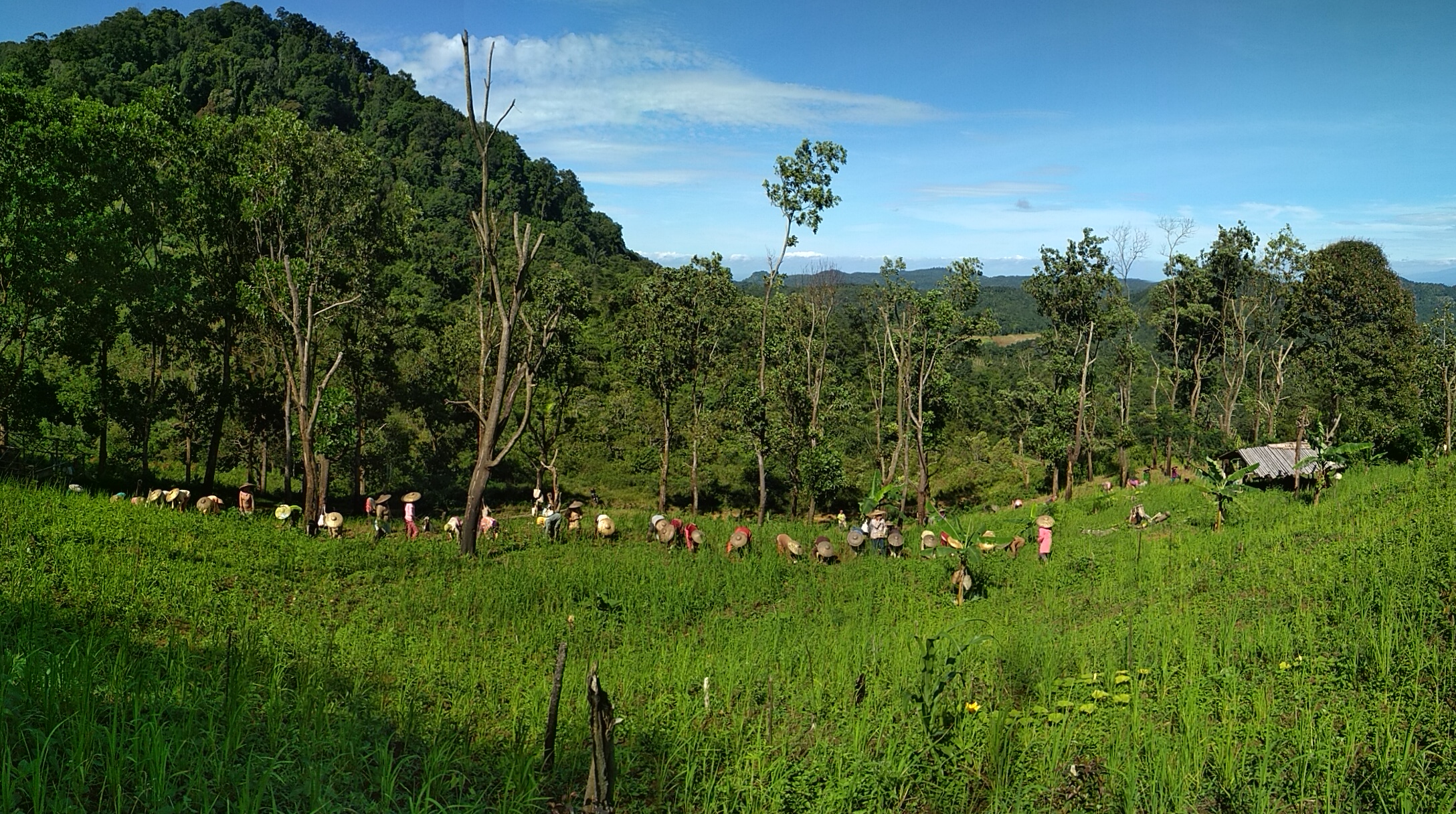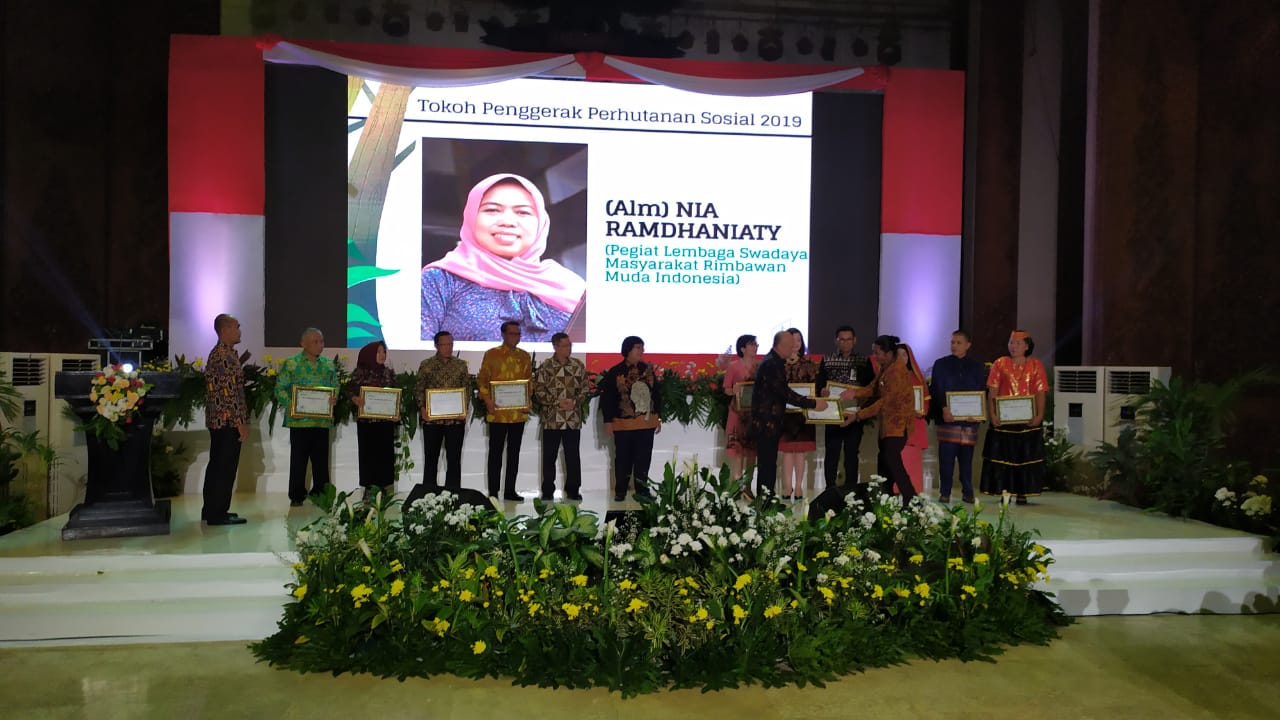
The Sundanese indigenous people, or better known as the Kasepuhan indigenous people, have local wisdom in protecting their forests. They still depend a large part of their livelihood on the forest and develop habits to live in harmony with their surroundings. Forests and the Kasepuhan customary community are two things that cannot be separated.
Kasepuhan Cibedug is one of the Kasepuhan located in West Citorek Village, Cibeber District, Lebak Regency, Banten Province. Kasepuhan Cibedug is located in the Halimun Mountain ecosystem. The trip to Kasepuhan Cibedug is generally done by motorbike for 30 minutes, after the paved road runs out in Cibengkung Village, Citorek (3.5 hours from Bogor City by motorized vehicle). The location is quite isolated because to reach there we need to travel up and down hills. Fog often falls when the air cools down in the morning or early evening.
Kasepuhan Cibedug is one of the Kasepuhan groups that is still persistent in maintaining a harmonious relationship with nature, while many other indigenous groups have experienced drastic changes. The role of strong customary institutions, geographical isolation and socio-cultural capital is some factors that support this strength.
In terms of cultural philosophy, there are several proverbs that are believed by the Kasepuhan Cibedug indigenous people (as well as other Kasepuhan), which relate to local wisdom in managing or regulating their territory.
“Gunung teu meunang melebur, leuweung teu meunang diruksak”, (mountains must not be destroyed and forests must not be destroyed. This proverb implies a natural resource management system in accordance with local wisdom, which implies that humans are part of the natural system. If natural resources are damaged, human life will also be disturbed. Another saying is ‘penyangga kahirupan supaya hurip’, (life support to live), meaning that Kasepuhan Cibedug indigenous people believe that forests and water are life support that must be preserved.
In regulating forest areas (leuweung), the Kasepuhan Cibedug indigenous people divides the forest into several parts, namely leuweung kolot, leuweung titipan, leuweung cadangan, and leuweung garapan.
The Kasepuhan Cibedug indigenous people explained that leuweung kolot is a forest area that should not be disturbed, because there are springs in the area. Leuweung titipan is a leuweung kolot in which inside it there are locations that are considered sacred, marked for example by the presence of historical buildings (for example at the location of the Cibedug site in the form of punden berundak, as well as at locations where boundary markers are found). Leuweung cadangan is a form of land reserved by the community for the future, while leuweung arable is an area where there are fields, gardens, and lembur (villages).
The Kasepuhan Cibedug indigenous people believe that there is a supernatural power that helps guard their leuweung, therefore they believe that if they destroy the leuweung they can receive misfortune / disaster, or often termed kebendon. Deforestation in customary areas (wewengkon), for example, is believed to cause nature to be angry and prevent rain from falling. Kabendon can also come down in other forms such as crop failure due to pest attack, fires, and accidents. This can happen to individuals, or in a larger form (community).
The Kasepuhan Cibedug Indigenous People view the forest and its surroundings as a life-giving and need to be protected. The relationship between the community and nature needs to be reciprocal so the community does not only benefit from the forest, but also maintains it through the wise use of agricultural land. In rice fields for example, rice cultivation (pare gede or large rice) is carried out only once a year to give the land time to rest. During this period of rest, the hay is put back into the soil (malik jarami) without being burned to restore soil fertility. The land (Mother Earth) is respected in the kasepuhan culture, as can be seen in the nibakeun ritual which was carried out before sowing the seeds in the fields, the community asked Nu Bogana (God) for permission to spread the seeds in the fields.
The existence and role of the Kasepuhan Cibedug Indigenous People in protecting nature is not only protecting the environment, but also protecting their culture. Like carrying out the nibakeun ritual, which is a custom for the group to ask permission to start sowing seeds in the fields.
The expansion of the Mount Halimun Salak National Park (TNGHS) in 2003 made almost all of the wewengkon in Kasepuhan Cibedug fall into the core area of the national park. The national park has prohibited the activities of the Kasepuhan Cibedug Indigenous People because the national park think that they are destroying the forest. For example, farming activities on dry land (ngahuma) are prohibited. From this ban, in research conducted by RMI in 2020, around 10 rice varieties (pare gede) have disappeared (not found to be planted by the community).
In 2019, the Kasepuhan Cibedug Indigenous People demanded that the wewengkon claimed by the country to be returned to indigenous groups, through the Customary Forest scheme.
On World Environment Day, which is celebrated every 5 June each year, we need to take a step back and see that the contribution of the Kasepuhan Cibedug Indigenous People is very large in protecting the environment. Therefore, the country should return the forest management rights to those entitled, the Kasepuhan Cibedug Indigenous People, so that it can be ensured that the forest is managed fairly and sustainably, for the welfare of the Kasepuhan Cibedug Indigenous People.
Author: Siti Marfu’ah
Translator: Alfina Khairunnisa












